Toyota Corolla Cross Vs Subaru Crosstrek Comparison: Crossfight

Round two, fight!
The Corolla Cross is a big deal for Toyota. The world’s largest automaker was missing a conventional competitor in the red-hot subcompact crossover class. So now it’s stuck its best-selling nameplate onto something to slot below the RAV4. It’s a more conventional package than the niche C-HR, with an upright shape and available AWD.
Subaru already found success in this segment with the Crosstrek. A decade ago, the company lifted its Impreza hatchback, treated it to an extra helping of black cladding, and sent it on its way with a new name. Now the Crosstrek is one of the sales juggernauts, the only subcompact SUV to sell over 100,000 units in the US each of the last two years.
Get a Quote on a New Toyota Corolla Cross or Subaru CrosstrekWhen we last pitched the new Toyota against a competitor, the Kia Seltos, both cars were in their respective top trims. The newcomer lost, so this time around we’re looking at the mid-level options. Read on to see if the Corolla Cross can redeem itself.
Interior and Cargo Space
Corolla Cross: The Cross takes a lot of inspiration from its namesake, with a cabin layout nearly identical to the car. This translates to a clean dashboard with most major controls grouped around the “floating” touchscreen. A welcome change happens lower down, with a clearer USB port setup, available wireless charger, and chunky toggles for the heated wheel and seats. There are a few RAV4-like metal accents to perk up the interior, most notably on the door grab handles. Material quality is good, and the door cards hold a fair amount of everyday detritus.
The seats are mounted higher, with reshuffled innards to account for the more vertical seating position. They’re comfortable, though more height adjustment wouldn’t be missed for those shorter in stature. Good amounts of scalloping in the rear thrones keep them supportive for adults, too. It’s narrow back there, though, so keep it to kids if you’re going three-wide.
Legroom is 42.9 inches up front and 32.0 inches in the back (1,090 and 813 millimeters). The CC’s got good headroom too, measuring in at 39.5 and 39.1 inches (1,003 and 993 mm) front to back.
Out back, buyers will find 24.3 cubic feet (688 L) of storage—1.2 cubes (34 L) less than the front-drive models. Oddly, Toyota doesn’t quote a number for the seats down. The load lip is helpfully low, and the opening is reasonably square. Towing capacity is capped at 1,500 lb.
Crosstrek: The Crosstrek we have here is the Sport (Outdoor in Canada). This mid-level trim drops yellow accents into the interior, an appropriate zing to match the go-anywhere vibe. More important than that, the seats are all reupholstered in an easy-wipe, stain-resistant fabric. That’s a huge plus, whether you’re carting young ones around or just dealing with the reality of winter.
Whereas the CC’s dashboard design is all clean and large expanses of free space, the Crosstrek goes in the opposite direction. It’s an information overload at first, with the busy infotainment screen and a secondary display up top. Subaru still knows the value in physical controls, however, with radio and climate still using good ol’ rotary dials. The wheel is festooned with buttons, but once you get used to the lower controls, it’s great to rarely need to take your hands off the helm. The pebbled, brittle plastic doesn’t feel as nice as the stuff in the Toyota, though.
In terms of space, the Crosstrek has the edge on the Corolla Cross, especially in legroom. You’ll find 43.1 inches (1,095 mm) of the stuff up front, and a still-healthy 36.5 inches (927 mm) out back. Headroom is slightly more than the CC up front (39.8 inches / 1,011 mm), and about an inch worse in back (38.0 inches / 965 mm). The Subaru makes do without a moonroof, mind.
Pop the Scooby’s trunk and you’ll find a smaller opening, though it is much more square than the Toyota’s. There’s 20.8 cubic feet (589 L) with the seats up, which expands to 55.3 cubes (1,566 L) when one drops the seats.
SEE ALSO: Subaru Crosstrek vs Mazda CX-30 ComparisonBottom Line: This is a close one. We like the cleaner, higher quality Toyota interior. It’s just cozier. What nets the Crosstrek its first win of this face-off is the comfier, wipe-down seating, and the additional storage space in its door panels.
Tech and Features
Corolla Cross: Oh, Entune. What haven’t we already taken Toyota’s infotainment system to task for? We’ll follow our mothers’ advice and stick to the nice things: it’s easy to learn, and physical buttons are appreciated. Apple CarPlay worked flawlessly during our time together too. Responses from the 8.0-inch touchscreen are reasonably speedy.
The Corolla Cross uses a classic pair of easy-to-read analog dials, with a small LCD screen to the right handling things like trip info.
Like the last CC we drove, the heated steering wheel in this red example worked very effectively. No need for gloves here, except to maybe keep your hands from getting too hot. But Toyota, please give us a backup camera with a resolution appropriate for the decade. Please. At least the CC comes with a wireless charger, something you won’t find in the Subaru.
Crosstrek: Subaru’s infotainment system is a much busier affair. Measuring the same 8.0 inches across, the screen is colorful and chock-full of digital buttons. It’s not very speedy in its responses, however, and the disconnect between rotating a climate control knob below the main screen only to see the response above it takes some getting used to.
Apple CarPlay took a while to activate on every start-up, and never restarted music automatically. Subarus are also the only cars I’ve experienced where CarPlay ends immediately when the engine is switched off, not when the door is opened.
The heated steering wheel in the Crosstrek took a while to get properly toasty, and prioritized the areas closer to 4- and 8-o’clock. No complaints about the heated seats, however, which were quick to warm up in a week that included a bitter cold blast. As in the CC, the Crosstrek’s sound system is perfectly adequate.
SEE ALSO: 2021 Kia Seltos vs 2020 Mazda CX-3 vs 2020 Toyota C-HR ComparisonBottom Line: These two are pretty evenly matched. The Subaru’s infotainment system is more robust, but its learning curve is also steeper. Neither of the setups are their respective car’s strong points, either. They get the job done, and no more. This category’s a wash.
Powertrain, Driving Feel, and Fuel Economy
Corolla Cross: True to its name, the CC uses the same 2.0-liter engine from the Corolla sedan and hatchback. Here, it produces 169 horsepower and 151 pound-feet of torque. Also appearing for a return performance is the unique CVT, which features a physical first gear for smoother launches. Unlike any other Corolla—for now—the ‘Cross features an all-wheel drive system, which sends power to the rears when the front axle detects slip.
Unfortunately, the four-pot feels asthmatic in most situations. “Engine is also overmatched for the Corolla Cross size and weight,” says Schlee. He says the Subaru’s base 2.0-liter is more powerful, and while I wouldn’t go that far, we agree this is notably slower than the Crosstrek. The Toyota is loud too, since the CVT needs to reach high in the rev range to extract the meager torque on offer. Mike reports vibrations through the pedal and steering wheel. Basically, the Corolla Cross isn’t quick, and doesn’t feel like it enjoys the act of trying, either.
To its credit, the CVT is quick to respond to jabs of the throttle, altering its ratio to make the most of what’s on offer.
AWD Corolla Cross models feature an independent rear suspension, instead of the simpler beam axle of front-drivers. This gives the Toyota its greatest strength: superb ride quality. It rides smoothly, with calm, considered responses from the light steering. The 17-inch tires and their thick sidewalls further smooth over high-frequency road imperfections. If you’re going to be doing lots of highway miles, the Corolla Cross is a great companion.
Fuel economy is officially quoted at 29/32/30 mpg (8.1/7.4/7.8 L/100 km) for AWD models. The Corolla Cross scored just a little worse than that city number.
Crosstrek: Subaru offers two engines in the Crosstrek. Lower trims come with a dreary 2.0-liter that makes the Corolla Cross setup seem like a big block. Do it if you must, but plan far ahead for highway merges.
A much better match is the 2.5-liter flat-four, which shows up starting in this Sport/Outdoor trim. 182 horsepower and 176 lb-ft of torque are improvements of 13 and 25, respectively, over the Corolla Cross. Like its rival, the Subaru makes use of a continuously variable transmission, routing power to the brand’s traditional symmetrical AWD layout.
Around the city, on the highway, and off tarmac, the Crosstrek always felt ready to go compared to the tardy Toyota. It’s even noisier, somehow, especially at idle, but at least the little white Scooby translates that noise into forward motion. The CVT finds the thick part of the flat-four’s torque peak quickly, and you can even force it into fake “gears” if you want to play race car.
The ride quality has a slightly agricultural edge to it that’s missing from the smooth-sailing Toyota. The low nose and quick steering make the Crosstrek surprising fun to toss around, however. The more advanced AWD system finds grip easier, as well. While both cars came equipped with winter tires, the Subaru felt more secure plowing through standing slush.
Official fuel economy figures are 27 mpg city, 34 mpg highway, and 29 mpg (8.8/7.0/8.0 L/100 km, respectively). The week skewed slightly higher clocking in at 26 mpg (9.0 L/100 km).
Bottom Line: Neither of us took long to determine the Subaru as our pick in this category. Its on-paper advantage is slim, but in practice the Crosstrek was dramatically quicker in all situations. Mix that with a more robust AWD system and barely any penalty at the pumps, and the Crosstrek is a clear winner.
Styling
Corolla Cross: Someone left the RAV4 in the wash for too long. That’s the general feeling with the Corolla Cross. Despite this being a brand new model for 2022, it already feels familiar on the road. That’s no bad thing, as it’s a pretty attractive package, with an assertive nose and swollen arches. The rear hatch design and taillights are all pretty anonymous, as are the 17-inch wheels, but overall, the CC should satisfy those wanting a little cute-ute.
Crosstrek: Like its big bro Outback, the Crosstrek looks like what it is: a jacked-up car that’s been sprayed with a liberal helping of cladding. In fact, this Sport/Outdoor gets extended plastic, a sort of halfway point between Subaru’s usual look and the new Wilderness sub-brand. We expect the Crosstrek to be the third model in that lineup, come to think of it…
The car-like shape lends the Crosstrek a lower nose, making it easier to see out of. We like the way the taillights jut out from the bodywork, too. With the chunkier styling, gunmetal wheels, and extended roof rails, it looks the part.
Bottom Line: It’s impressive how different these two look—and how much we like both. As ever, beauty is in the eye of the beholder, so you’ll likely have your own preference.
SEE ALSO: Toyota Corolla vs Hyundai Elantra ComparisonPricing and Value
Corolla Cross: The Corolla Cross lineup begins with the budget-friendly L model at $23,410 ($26,780 CAD), including destination ($1,215 / $1,890 CAD). Want AWD? That’ll be another $1,300 ($1,400 CAD).
Our Canadian-spec LE Premium AWD is the penultimate trim. It’s roughly the equivalent of checking every option box on the US-spec LE, adding in the upgraded audio system, moonroof, and roof rails, but skipping the JBL sound system. It does get a wireless charger, however. The final tally is $29,465 ($32,480 CAD).
Crosstrek: Getting into the Crosstrek will cost you at least $23,620 ($25,795 CAD). Barely more than the Corolla Cross—and in fact less in the land of Tim Hortons—and you still get standard AWD for your money. The Crosstrek is one of the rare crossovers that still come with a manual transmission, however, so you’ll need to pay $24,970 ($27,995 CAD) for the CVT, which also adds in Subaru’s EyeSight safety setup.
The Sport/Outdoor is the most affordable way to net the larger 2.5-liter engine. To get closest to our Canadian-spec tester, you’ll need to check the option box for the moonroof, blind spot detection with rear cross-traffic alert, and upgraded infotainment. Canada goes without the glass in the roof, though. The price tag? $29,570 ($32,295 CAD).
Bottom Line: Another close fight here, one of the closest in AutoGuide history. The difference is just $105 in the Corolla Cross’ favor, or $185 CAD for the Subaru. Given everything we’ve learned about these two, this is another category we’re calling a tie.
SEE ALSO: Mazda CX-30 vs Mercedes-Benz GLA Comparison: Lofty AspirationsVerdict: Toyota Corolla Cross vs Subaru Crosstrek Comparison
This was a tight race. As we suspected after the last matchup, the Corolla Cross is a more impressive vehicle when it’s got a lower price tag hanging off its big, upright grille. “Full of the easy-to-use DNA that appears in so many Toyota products,” concludes editing manager Mike Schlee. He adds that the CC is “easy to drive, easy to see out of, easy to get in and out of. All of the controls and infotainment menus were well laid out and easy to operate.”
In the end, it was the Toyota’s powertrain that snatched victory from the jaws of defeat. That poor 2.0-liter feels overwhelmed with the weight of the Corolla Cross, losing any hint of verve the powerplant showcases in the sedan or hatchback. Unfortunately, we don’t see Toyota dropping a 2.5-liter of its own under the hood anytime soon—we just look forward to the hybrid.
Until then, however, the Crosstrek is our pick of this pair. Quicker, nimbler, and with a more spacious interior, it’s no wonder the Subaru is such a big seller.
Become an AutoGuide insider. Get the latest from the automotive world first by subscribing to our newsletter here.

Kyle began his automotive obsession before he even started school, courtesy of a remote control Porsche and various LEGO sets. He later studied advertising and graphic design at Humber College, which led him to writing about cars (both real and digital). He is now a proud member of the Automobile Journalists Association of Canada (AJAC), where he was the Journalist of the Year runner-up for 2021.
More by Kyle Patrick




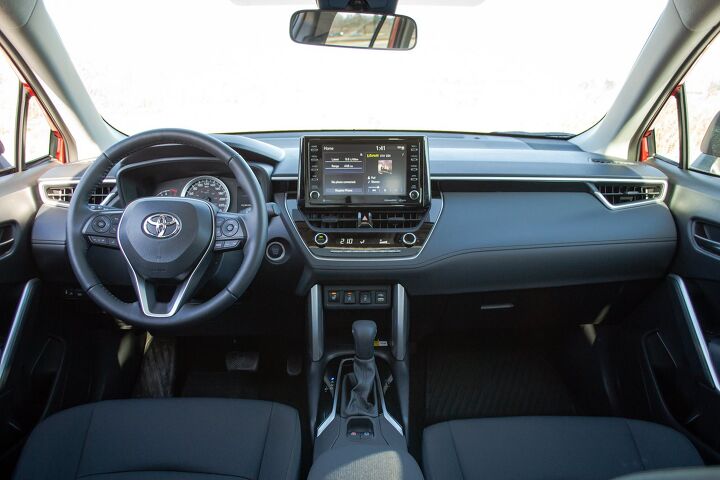

































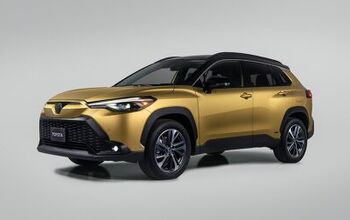
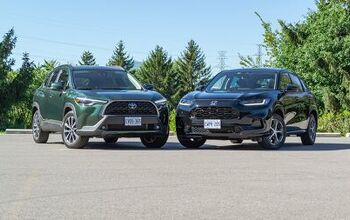
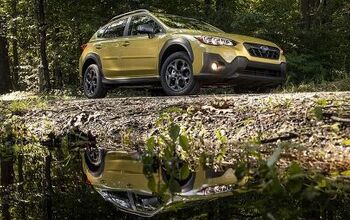
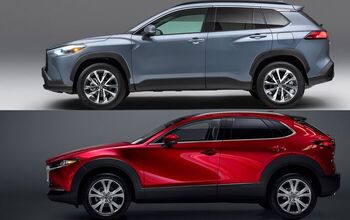
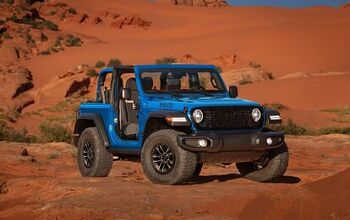




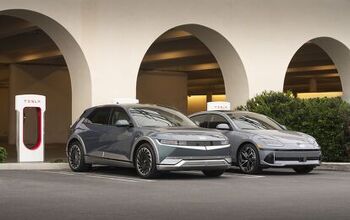

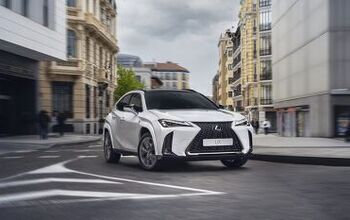

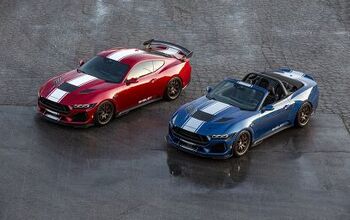
Comments
Join the conversation
I'd go for the Subaru before I would this Toyota
Used crosstrek